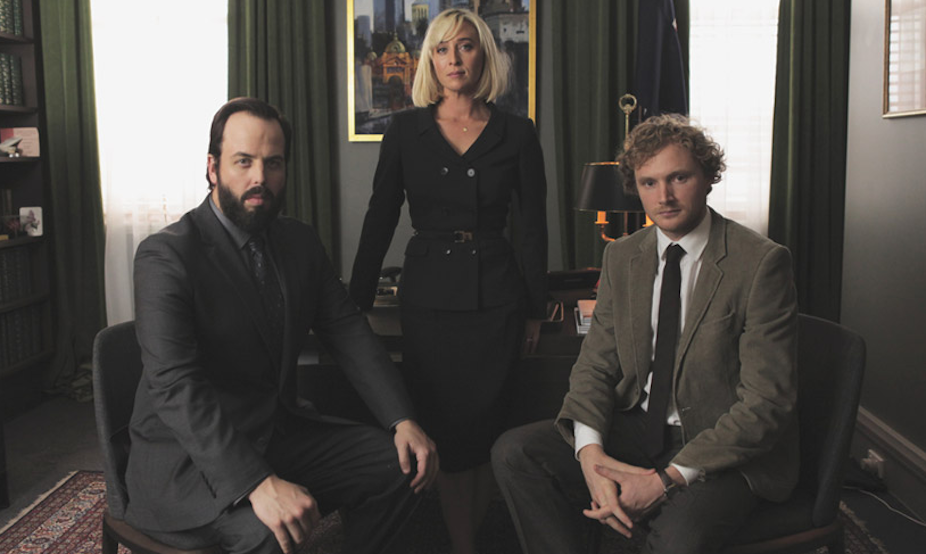With Ten’s new drama Party Tricks set for an October 6 premiere, coverage has focused on the social media campaign to promote the show. In advance of the screening, Ten has created in-character accounts for the lead characters, Kate Ballard (Asher Keddie) and David McLeod (Rodger Corser).
But to date there’s been a relative lack of buy-in to the campaign from the social media public. We collected data on the account for the week beginning September 23: there were 107 relevant tweets that mentioned the account names, a few hundred Twitter followers and 1,500 likes:

Is this a marketing failure – or is it just setting the stage for the campaign to follow when the show launches?
One example of an in-character account resonating with the public is Dr Cooper, of the Showtime show Nurse Jackie, which currently boasts 18,900 followers. But the follower growth for this account came mostly while the show was running (and may have had many more followers at the time who subsequently unfollowed the account).
As seen on the chart below, while the account began tweeting in February 2010, it was not until the Season 2 premiere in late March that it rapidly acquired followers, gaining approximately 2,500 followers in March 2009 and 3,700 in April, before steadily acquiring followers during the season. That growth stopped in June 2011, at the end of Season 3 (and when posts from the account stopped), having again seen boosts to its follower count between March and June 2011 as the season aired:

It’s worth pointing out there are significant differences between @DoctorCoop and the Party Tricks accounts. First, the Doctor Cooper account first tweeted in February 2010, a time when the use of Twitter for TV shows was still novel, and “trying to exploit the gap between TV and the internet” was worthy of coverage in the New York Times. Second, the style of the accounts is markedly different: while @DoctorCoop was a humorous account full of one-liners, Party Tricks has so far focused on discussing the AFL Grand Final, and photos of the “Premier” meeting schoolkids:
Whether this will ultimately resonate better with the Australian social media audience than the Secrets & Lies experiment has yet to be proven, but Ten must at least be applauded for trying to integrate social media into its programming.
So far, reality TV and sporting events have dominated the social media landscape in Australia; both are examples of “event television”, whereby viewers see the need to watch in real-time, rather than through catch-up services. Sitcom and drama formats often struggle to create this same sense of event, and it is worth exploring whether social media integration can create this, and make the shows feel more audience-encompassing.
Other than sporting events, Big Brother has traditionally been Australia’s social media winner, with the 2014 premiere receiving over 35,000 tweets and comments on its official Facebook page during the broadcast. But, while some of those were in response to officially posted comments and images, the majority were not, and the official accounts of Big Brother and Channel 9 were engaging with fans on social media, replying and retweeting.
In addition, evicted Big Brother contestants often continue the conversation with fans and official network accounts once they are out of the house, cementing an audience-to-character relationship through social media.
The fact these are real people inherently makes the relationship more authentic than those with fictional characters. Similarly, the tweeting by actors (as opposed to characters), which is now an annual event around US Television Premieres (as with CBS’s #CBSTweetWeek)), contains a sense of authenticity, and direct communication with real people, that attempts such as Party Tricks do not.
This authenticity gap could also be leaving the potential for sceptical posts to derail the conversation that Ten manufacture. Contemporary social media strategy often suggests to listen and engage rather than force the conversation, and that is what the Big Brother accounts do well.
There are undoubtedly ways for Channel Ten to make this work. The #auspol and #qanda audiences are huge on Twitter, and if Channel Ten find a way to mobilise these users behind their fictional politicians then this could be a powerful force. If, however, they continue with just the occasional “topical” tweet, Party Tricks success or failure will be achieved and gauged in the traditional way: advertising and viewer numbers.

